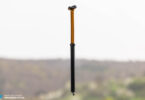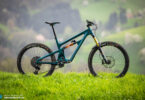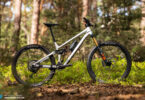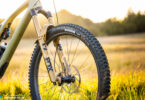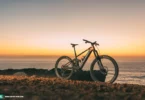As the latest addition to GT’s family, the fresh incarnation of a true evergreen rocks a high pivot suspension design and sends its predecessor into well-deserved retirement. In our “Best Enduro Bike of 2022” group test, we pitted the new GT Force Carbon PRO LE 2022 against the hottest enduro bikes of the year. Was it able to impress our test crew despite its demanding handling?
For an overview of the test fleet head to the group test: The best enduro bike of 2022 – 11 models in review
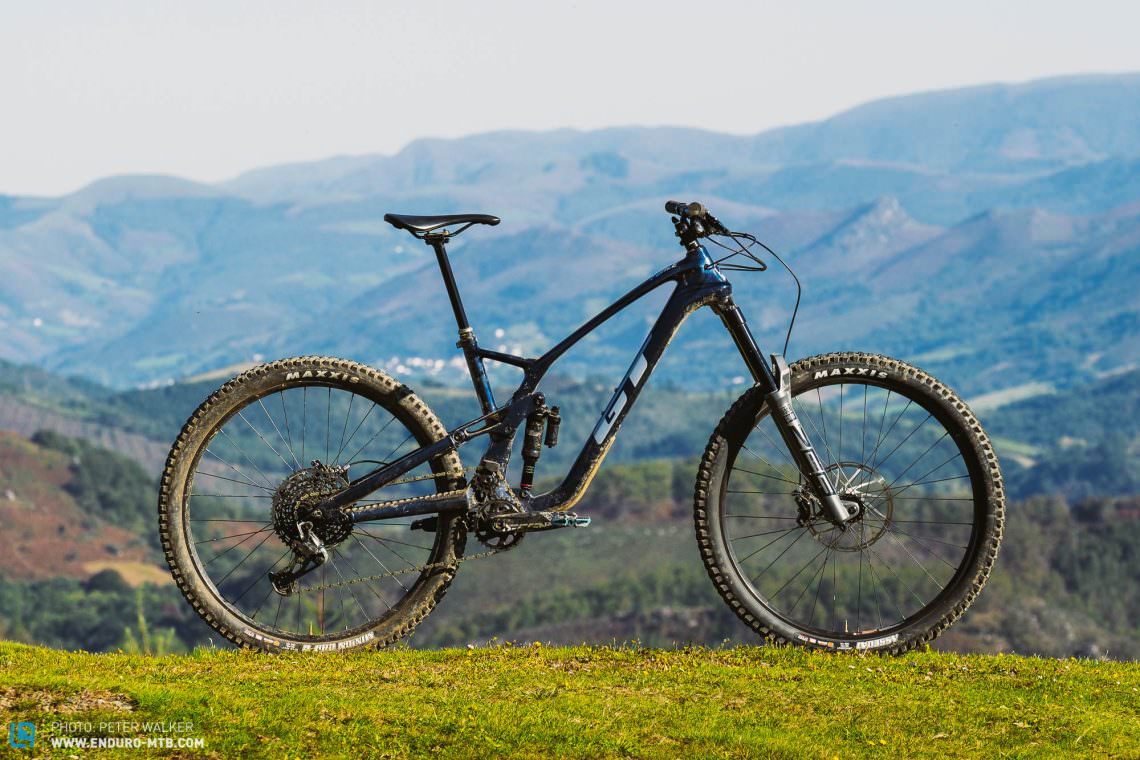
15.82 kg in size L | € 6,099 | Manufacturer’s website
The GT Force Carbon PRO LE 2022 is one of the two high pivot bikes featured in our “Best Enduro Bike of 2022” group test. Like the Cannondale Jekyll, it employs an idler pulley to counteract the high levels of pedal kickback typical of high pivot suspension designs. Despite the idler with integrated chain guide, during our test the chain came off on several occasions, mainly due to insufficient tension. Although most of the cables run inside the frame, the cable routing on the Force is rather messy. The cables aren’t clamped properly at the ports, making a loud rattling noise on rough terrain. Moreover, the cables rub against each other and the frame, leaving visible marks after just a few laps. Unfortunately, GT haven’t specced a UDH mech hanger or tool-strap mounts. However, you can attach a conventional tool strap to the brace between the seat and top tube The frame features a bottle cage mount, generously-sized seat and chainstay protectors as well as a big TPU plate on the down tube.

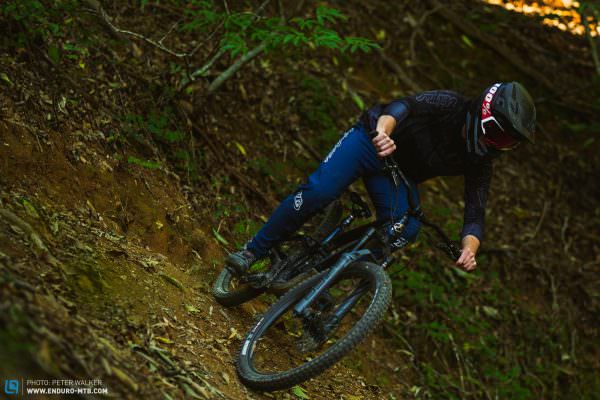
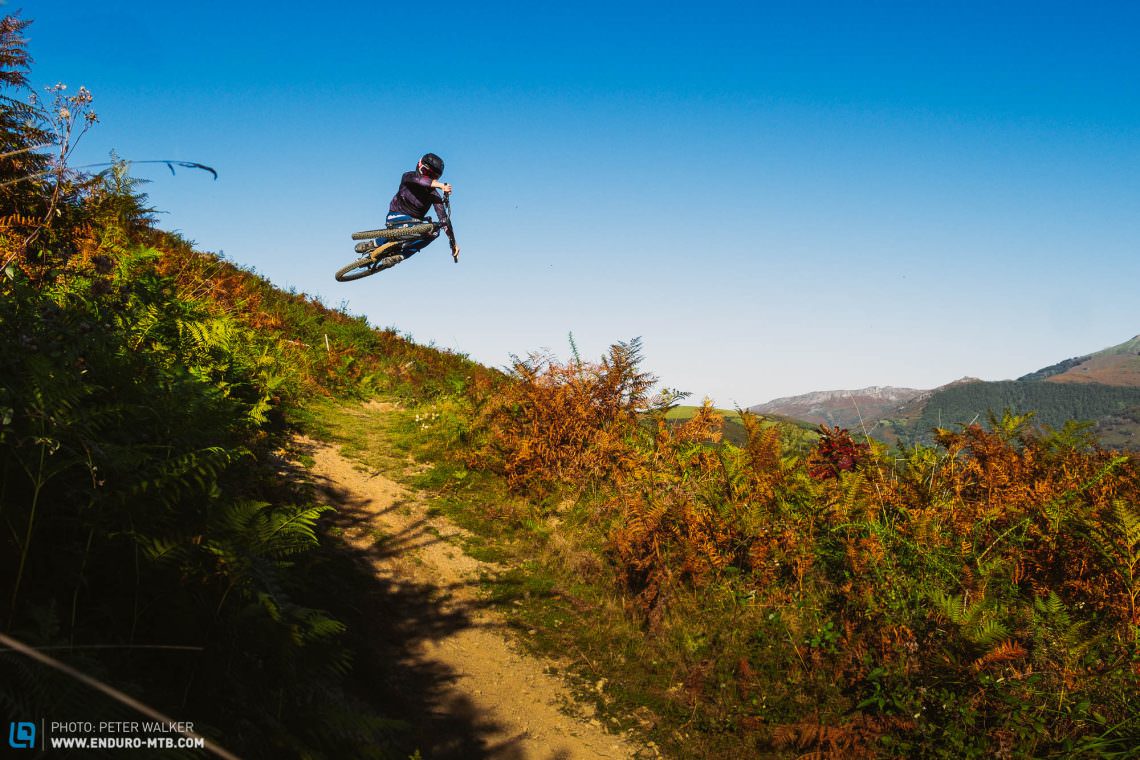
The spec of the GT Force Carbon PRO LE 2022
While the GT is one of the less expensive bikes in our group test at € 6,099, it’s the flagship model in the Force range and also one of the few bikes in this group test with high-end RockShox suspension. GT combine a ZEB Ultimate fork and Super Deluxe Ultimate shock, controlling 170/160 mm travel front and rear. Both the fork and shock are easy to set up and can be adjusted to your preferences and riding style intuitively. Nevertheless, we recommend using a digital shock pump to set up the fork, because with the ZEB’s large negative air chamber, even a few psi will massively affect the behaviour of the fork. SRAM CODE RSC four-piston brakes with a massive 220 mm rotor at the front and 200 mm disc at the rear provide powerful and reliable deceleration and also proved the most powerful brakes in the entire test field. For the drivetrain, GT combine a SRAM X01 rear derailleur with a cheaper GX shifter with matching cassette and chain. While the fancy rear derailleur might look great on the shop floor, it only weighs marginally less than its cheaper GX counterpart and doesn’t bring any real performance benefits to the trail. The Force PRO LE tips the scales at a whopping 15.8 kg, which makes it one of the heaviest bikes in test together with the Canyon Torque. GT’s in-house 800 mm, 30 mm rise bars sport a rather extreme back- and upsweep and take some getting used to. The TransX JD dropper post comes with an impressive 200 mm travel and can be inserted all the way into the frame. Additionally, the maximum extension of the dropper can be reduced by up to 30 mm – awesome! Not as awesome is GT’s in-house dropper remote, which is the same found on the Cannondale Jekyll. It feels spongy, has lots of play and poor ergonomics, not helped by its shard edges. We recommend upgrading to a better-quality remote as soon as you get your bike.
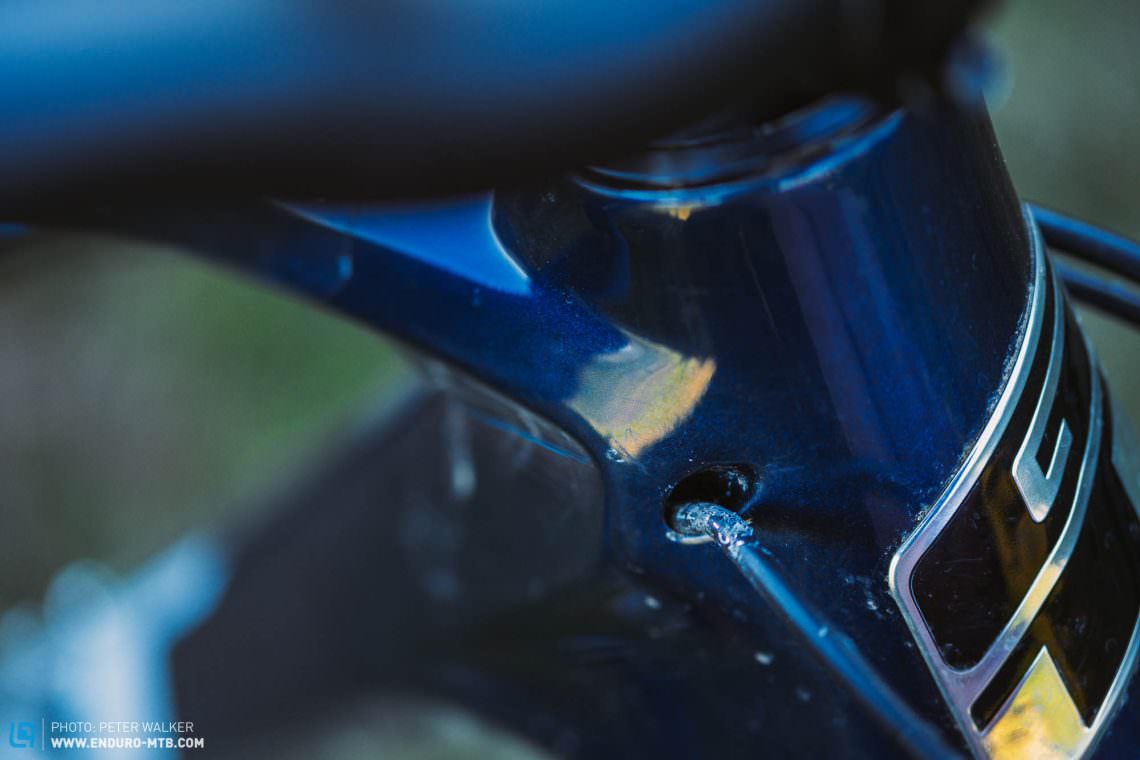
While the cables are mostly routed internally, they aren’t clamped at the ports properly, causing an annoying rattling noise on rough descents.
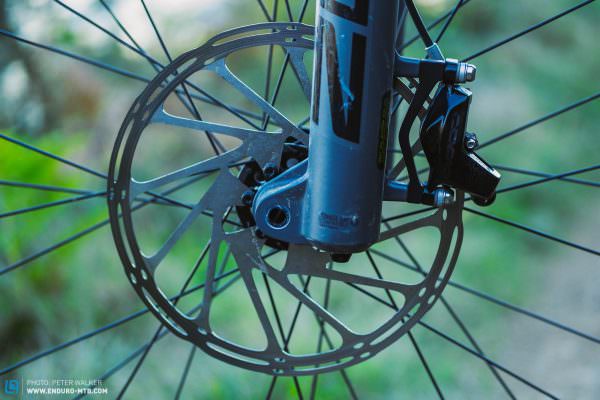
SRAM’s CODE RSC four-piston brakes are paired with a big 220 mm rotor at the front and proved the most powerful and reliable brakes in the entire test field.
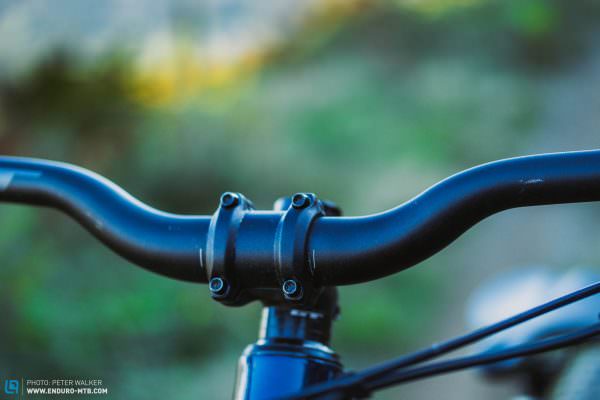
The 30 mm rise of GT’s own handlebars combined with the tall stack height make for an extremely high front that takes some getting used to.
GT Force Carbon PRO LE
€ 6,099
Specifications
Fork RockShox ZEB Ultimate 170 mm
Rear Shock RockShox Super Deluxe Ultimate 160 mm
Seatpost TranzX JD-YS105J 200 mm
Brakes SRAM CODE RSC 220/200 mm
Drivetrain SRAM X01/GX Eagle 1x12
Stem GT Alloy 50 mm
Handlebar GT Riser 800 mm
Wheelset WTB KOM i30 29
Tires MAXXIS ASSEGAI/Minion 2.5/2.4
Technical Data
Size S M L XL
Weight 15.82 kg
Specific Features
flip chip
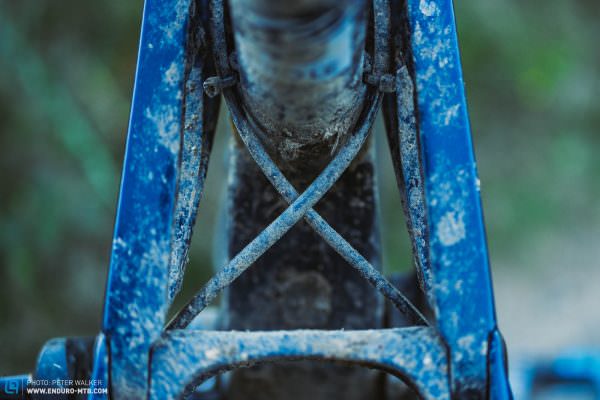
The cables are crossed and rub against each other and the frame every time the suspension compresses. After a few laps, the cables had already left visible marks on the frame.
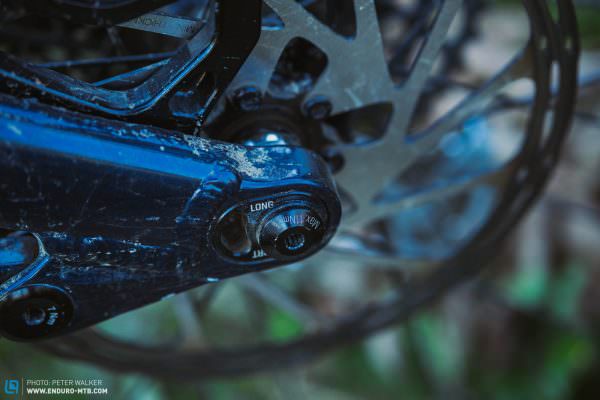
The flip chip in the dropouts lets you adjust chainstay length by 1 cm, allowing you to adapt the geometry of the Force to suit your preferences and riding style – excellent!
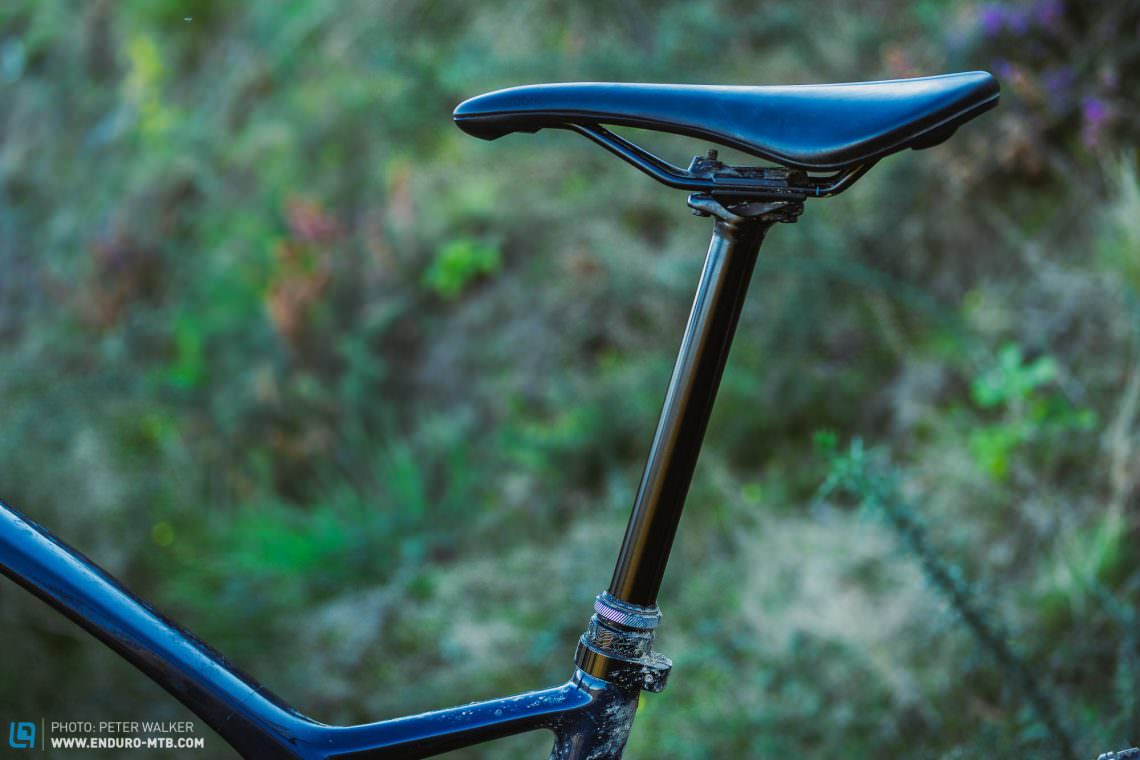
The stock TranzX dropper post has a whopping 200 mm travel, which can be adjusted by up to 30 mm in 5 mm steps.
Unfortunately, the MAXXIS tires come in the puncture-prone EXO+ casing, which makes them unsuitable for the Force’s intended purpose. GT pair a 2.5” Minion DHF at the front with a 2.4” Minion DHR2 at the rear, both in the harder MaxxTerra rubber compound. We recommend upgrading to a more robust tire casing like (i.e. MAXXIS DoubleDown) and changing to a softer rubber compound at the front. The tires are fitted on WTB KOM i30 alloy rims. On our test bike, the spokes came loose after just a few laps. The wheel build doesn’t seem to be robust enough to withstand the abuse of enduro riding.
As far as frame features and detailed solutions go, the GT Force Carbon PRO LE 2022 can’t keep up with the competition. The rattling cables and lack of a tool strap mount or universal UDH derailleur are significant flaws on a modern enduro bike.
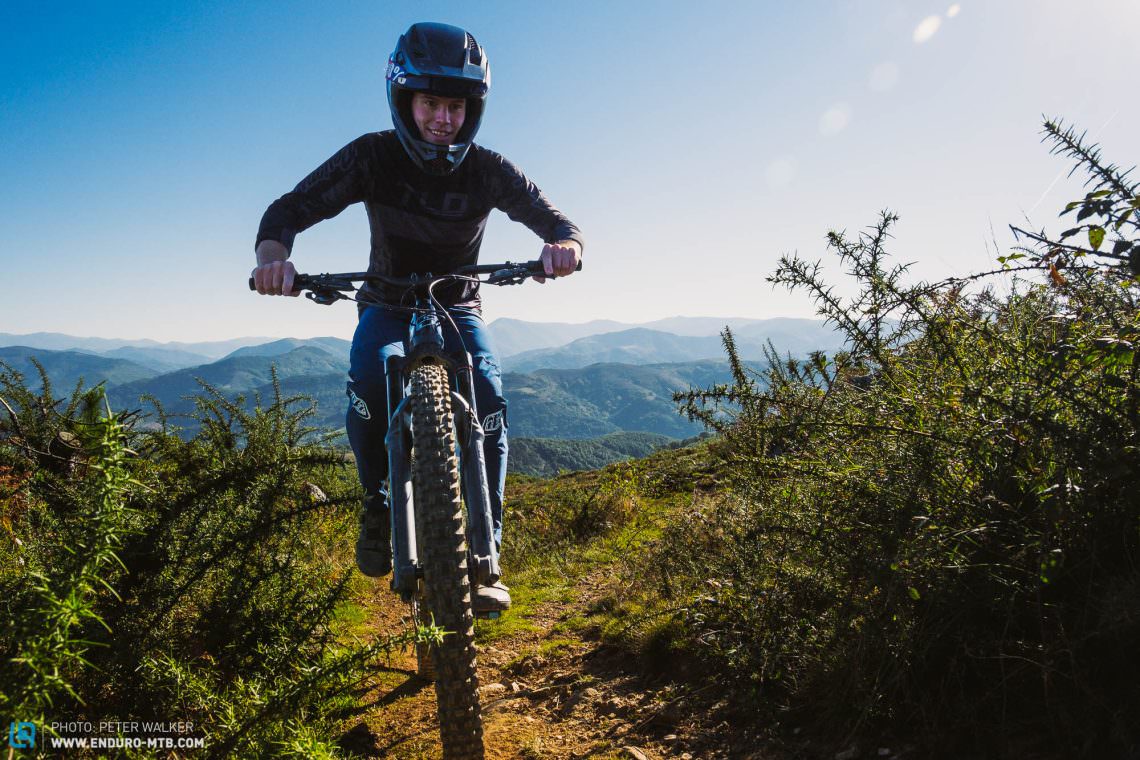
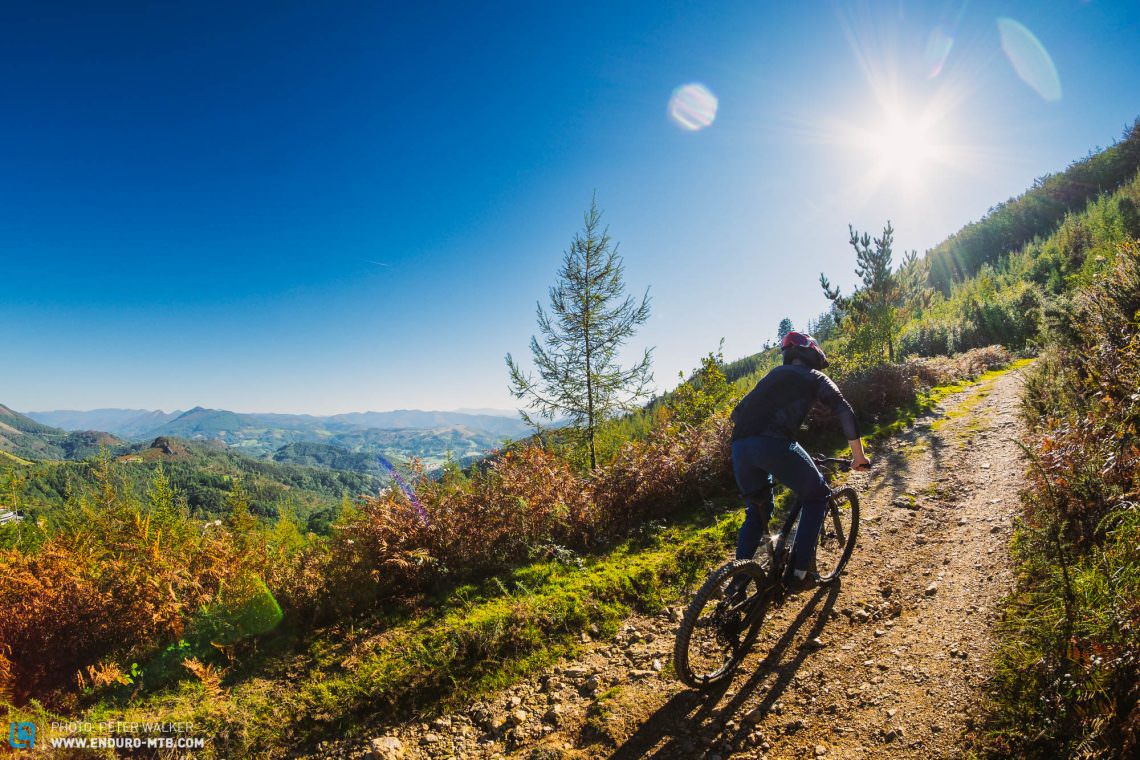
Uphill, the GT Force requires great physical strength. To make things worse, the idler pulley makes a very annoying grinding noise.
The geometry of the new GT Force 2022
The new GT Force is available in four sizes, S to XL. A flip chip in the dropouts lets you swap the chainstay length between 435 and 445 mm to suit your riding style and preferences – very cool! With a 645 mm stack height in size L, the GT has the highest front in the entire test field, with the extreme back- and upsweep of the handlebars only reinforcing this feeling. However, at 480 mm the reach of the Force sits right in the middle of the test field. On our test bike in size L, the 445 mm seat tube ensures plenty of freedom of movement. That being said, this doesn’t apply to all frame sizes, as the seat tube length changes proportionally making it hard to choose a frame size based on your desired reach.
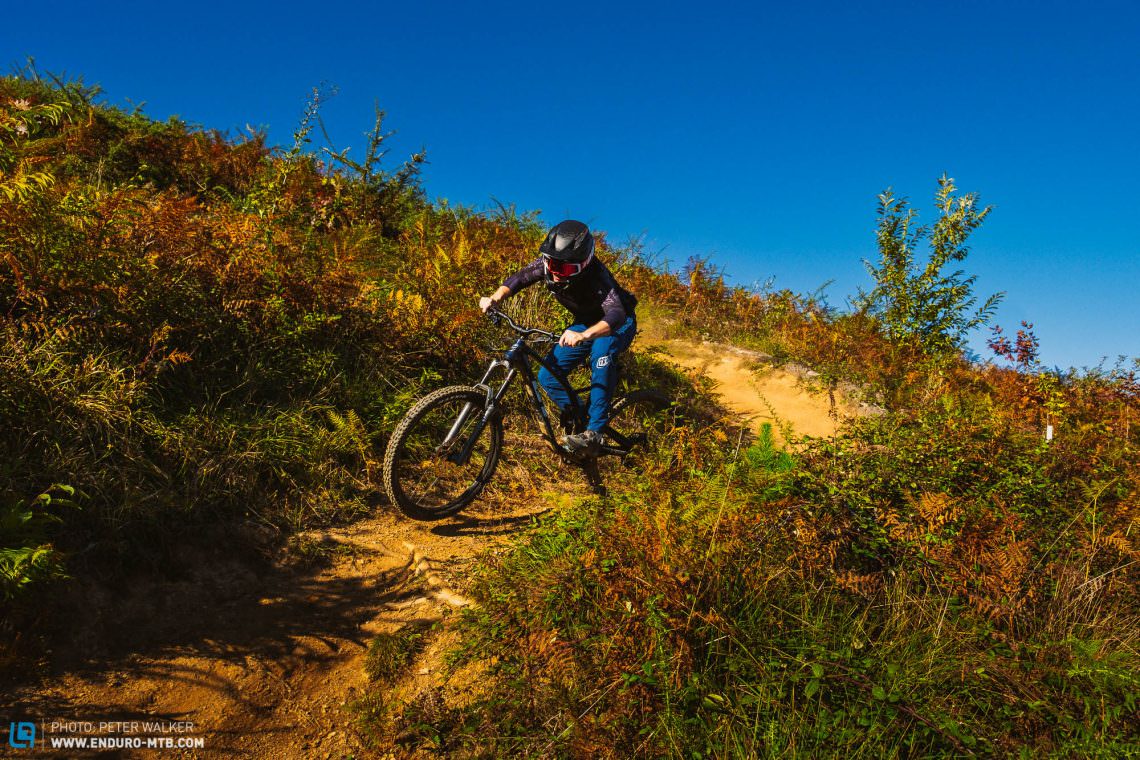
| Size | S | M | L | XL |
|---|---|---|---|---|
| Seat tube | 380 mm | 410 mm | 445 mm | 500 mm |
| Top tube | 563 mm | 590 mm | 617 mm | 654 mm |
| Head tube | 110 mm | 120 mm | 130 mm | 140 mm |
| Head angle | 63.5° | 63.5° | 63.5° | 63.5° |
| Seat angle | 78.0° | 78.0° | 78.0° | 78.0° |
| Chainstays | 435/445 mm | 435/445 mm | 435/445 mm | 435/445 mm |
| BB Drop | 30 mm | 30 mm | 30 mm | 30 mm |
| Wheelbase | 1,211/1,221 mm | 1,240/1,250 mm | 1,270/1,280 mm | 1,309/1,319 mm |
| Reach | 430 mm | 455 mm | 480 mm | 515 mm |
| Stack | 627 mm | 636 mm | 645 mm | 654 mm |
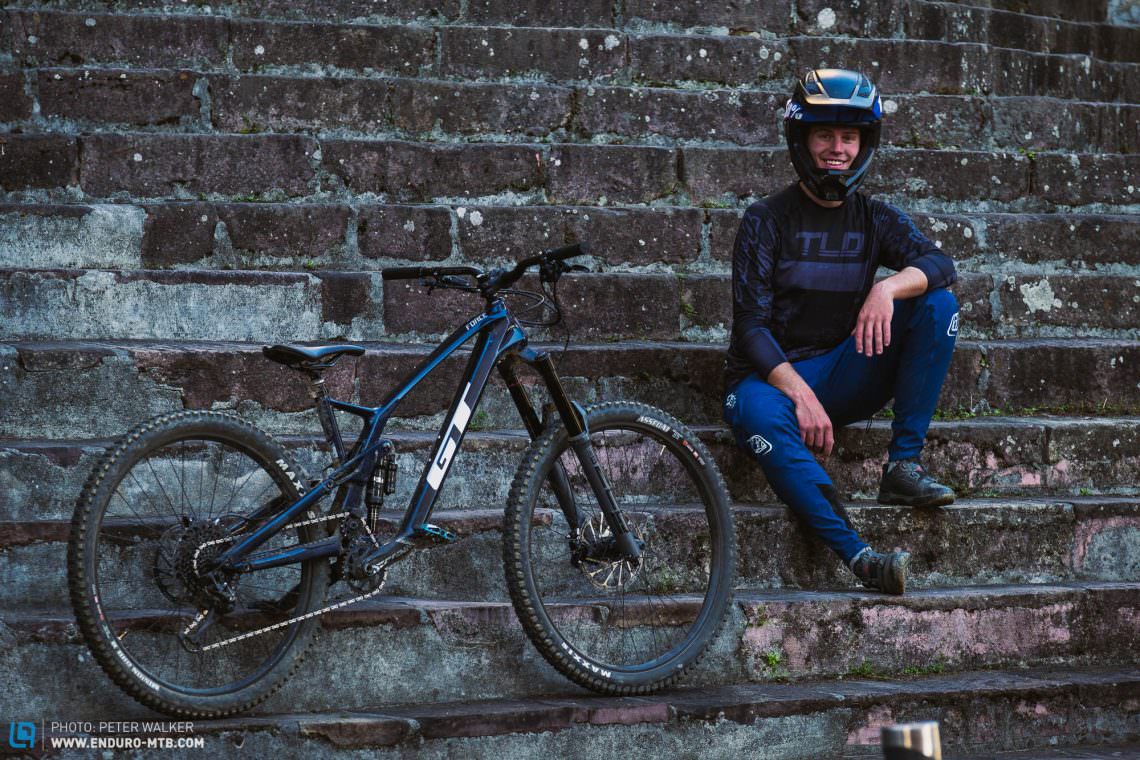
Pants Troy Lee Designs Sprint Ultra | Shoes Five Ten Kestrel Pro Boa | Socks Stance
GT Force Carbon PRO LE 2022 – Our riding impressions
Uphill, the GT Force Carbon LT falls to the back of the pack and is one of the more relaxed climbers in our ‘Best Enduro Bike of 2022’ group test. Although it generates good traction on technical climbs, the active rear suspension requires great physical effort. To make things worse, the idler pulley grinds along with every spin of the cranks, just like the other high pivot bike on test, the Cannondale Jekyll.
Chainstay and wheelbase length changes suddenly and unpredictably because the suspension of the GT rushes through its travel too abruptly. This requires an extremely careful riding style and quick reactions.
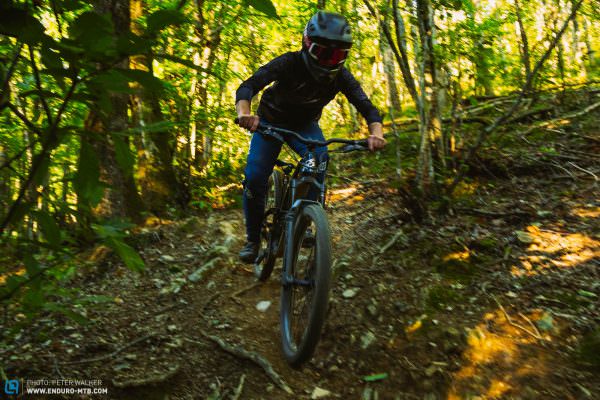
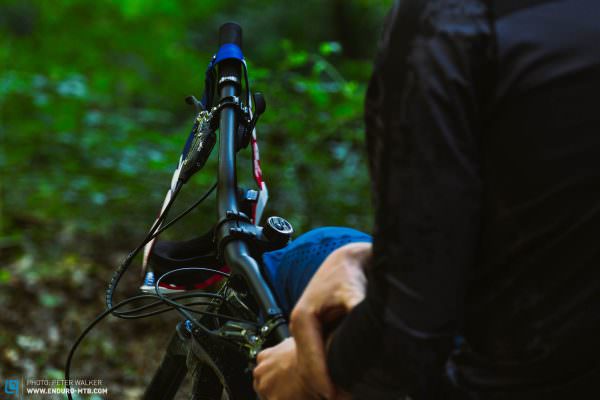
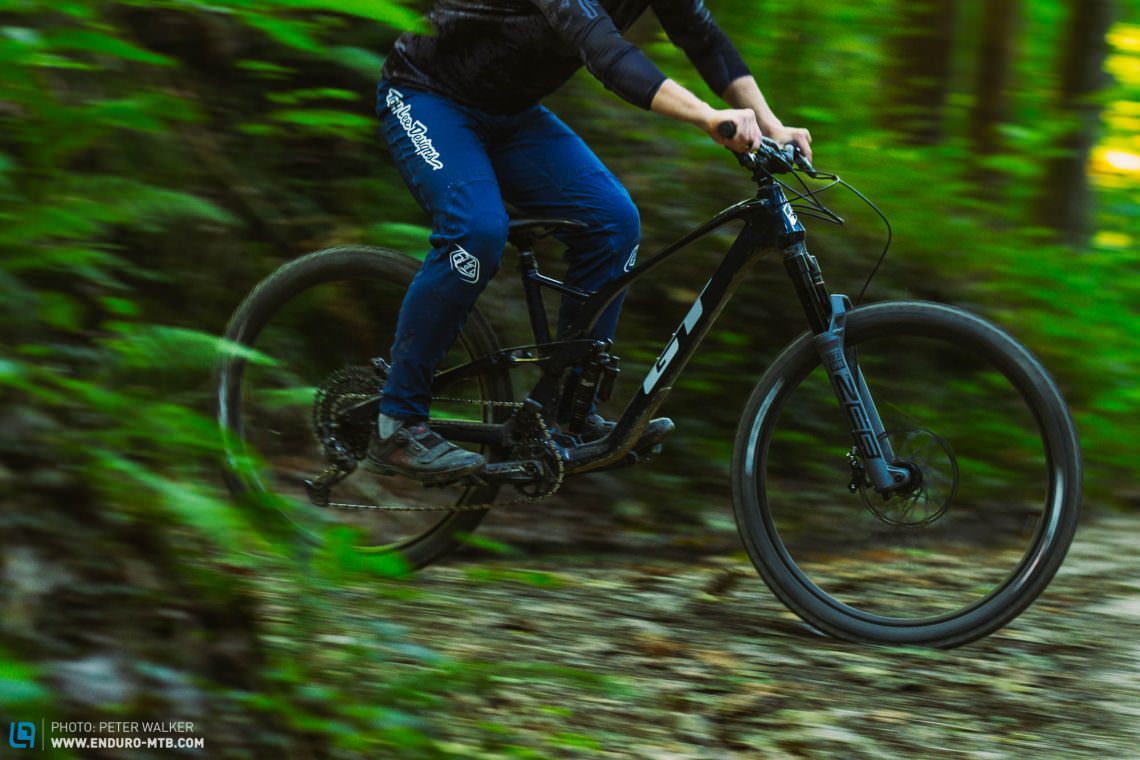
The GT Force swallows big hits, as long as they’re isolated. However, the rear suspension will let you know when it runs out of travel.
Downhill, the GT Force Carbon PRO LE didn’t convince us at all. Regardless of the nature of the trail, it’s the most demanding bike in the entire test field and the one that requires the most physical and mental effort. Unlike the Cannondale, the GT blows through its travel quickly, constantly shifting your balance between the front and rear wheel. This is primarily due to the fact that with high pivot suspension designs, the chainstay length increases or decreases as the suspension compresses or extends. Unfortunately, with the GT this leads to a major imbalance between the front and rear suspension, translating into vague and unpredictable handling and forcing you to constantly readjust your line rather than enjoy it. Despite its similar rear suspension design, the Cannondale Jekyll is far more predictable. While the high pivot suspension of the Force can swallow up bigger hits, it definitely lets you know that it’s reached the end of the travel. On top of that, the Force vibrates noticeably under braking, losing traction at the worst time possible and increasing the required braking distances, leaving you slamming on the brakes a lot sooner than other bikes. As a result, the GT Force falls far behind the competition in our group test.
Tuning tips: dropper remote with better feel and ergonomics | tires with more robust casing | volume spacer in the shock for more progression
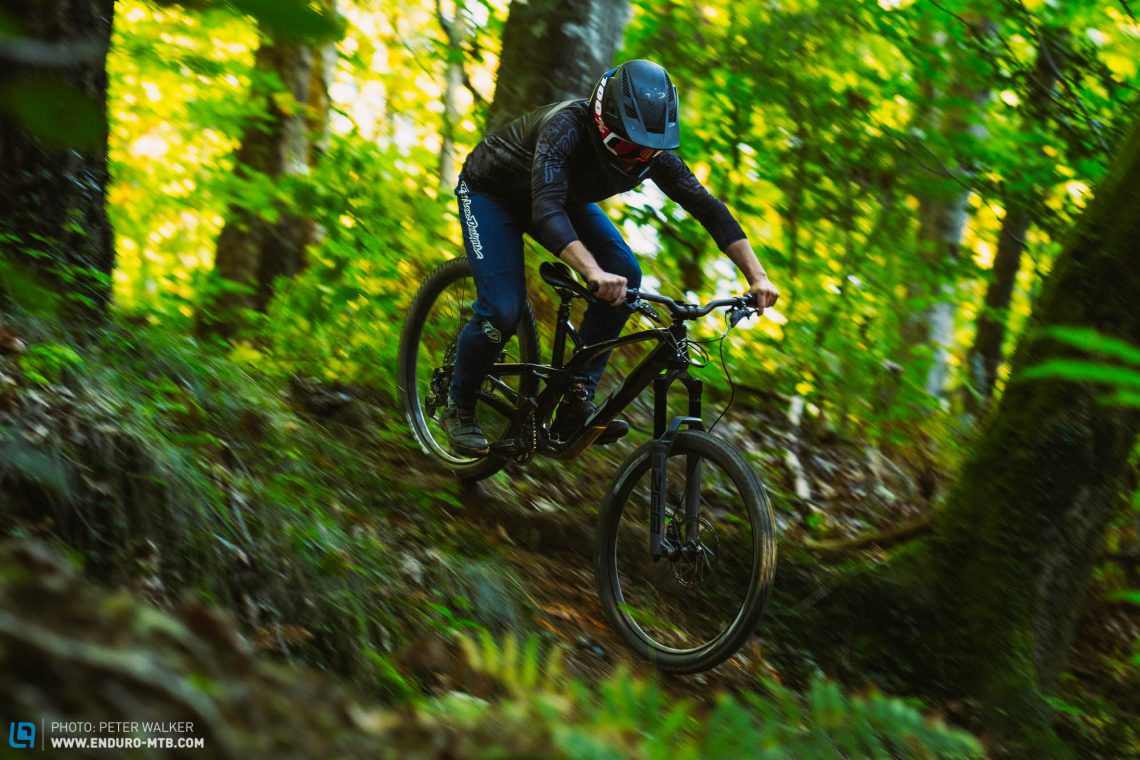
Conclusion
The GT Force emerges as the clear loser in our “Best Enduro Bike of 2022’ group test. Boiled down to its essence, GT’s new high pivot enduro bike requires a very cautious riding style. The suspension has little progression and reaches its limits quickly and abruptly while a significant lack of smoothness and strong brake judder spoil the fun on the trail. Moreover, GT still need to improve the spec and several frame details.
Tops
- plenty of freedom of movement
- adjustable chainstay length
Flops
- flimsy tire casing
- demanding handling
- poor rear suspension performance
- background noise, both up- and downhill
You can find out more about at gtbicycles.com
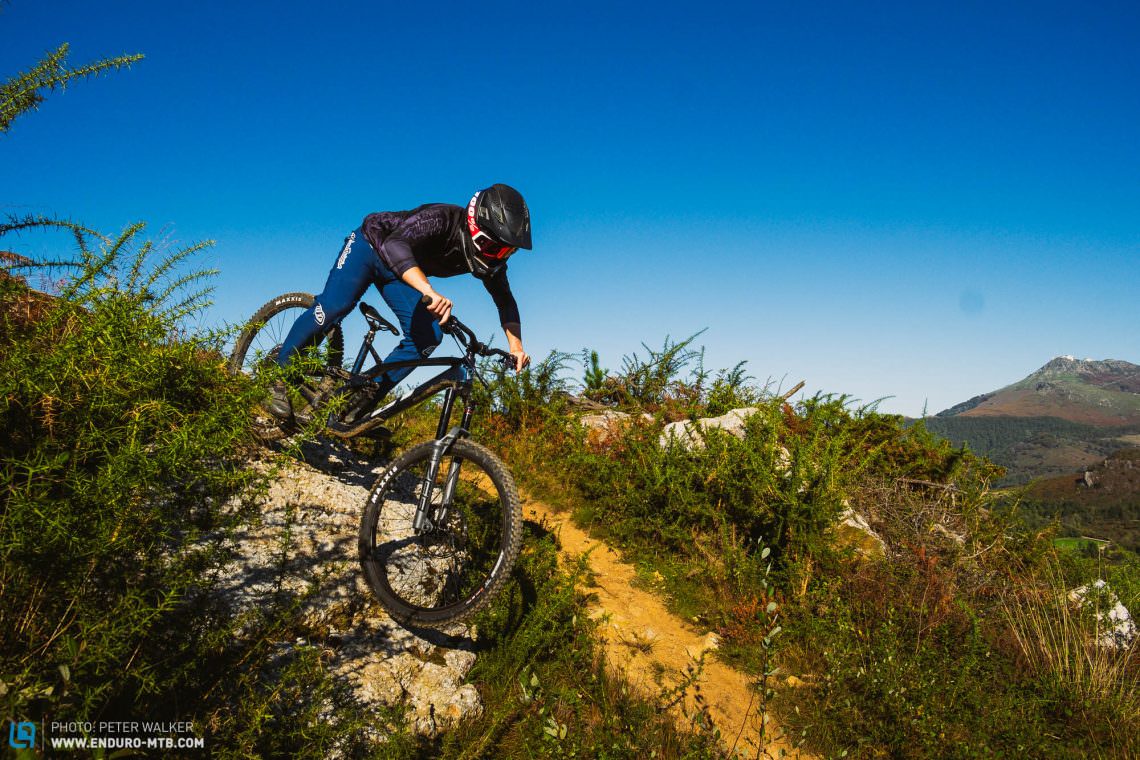
The test field
For an overview of the test fleet head to the group test: The best enduro bike of 2022 – 11 models in review
All bikes in test: Cannondale Jekyll 1 (Click for review) | Canyon Torque CF 8 (Click for review) | GT Force Carbon PRO LE | Nukeproof Giga 290 Carbon Factory (Click for review) | Orbea Rallon M-Team (Click for review) | Pivot Firebird Pro XT/XTR – Air (Click for review) | Rocky Mountain Altitude C90 Rally Edition (Click for review) | Santa Cruz Bronson CC X01 AXS (Click for review) | SIMPLON Rapcon 170/165 (Click for review) | Specialized S-Works Turbo Kenevo SL (Click for review) | YT CAPRA UNCAGED 6 (Click for review)
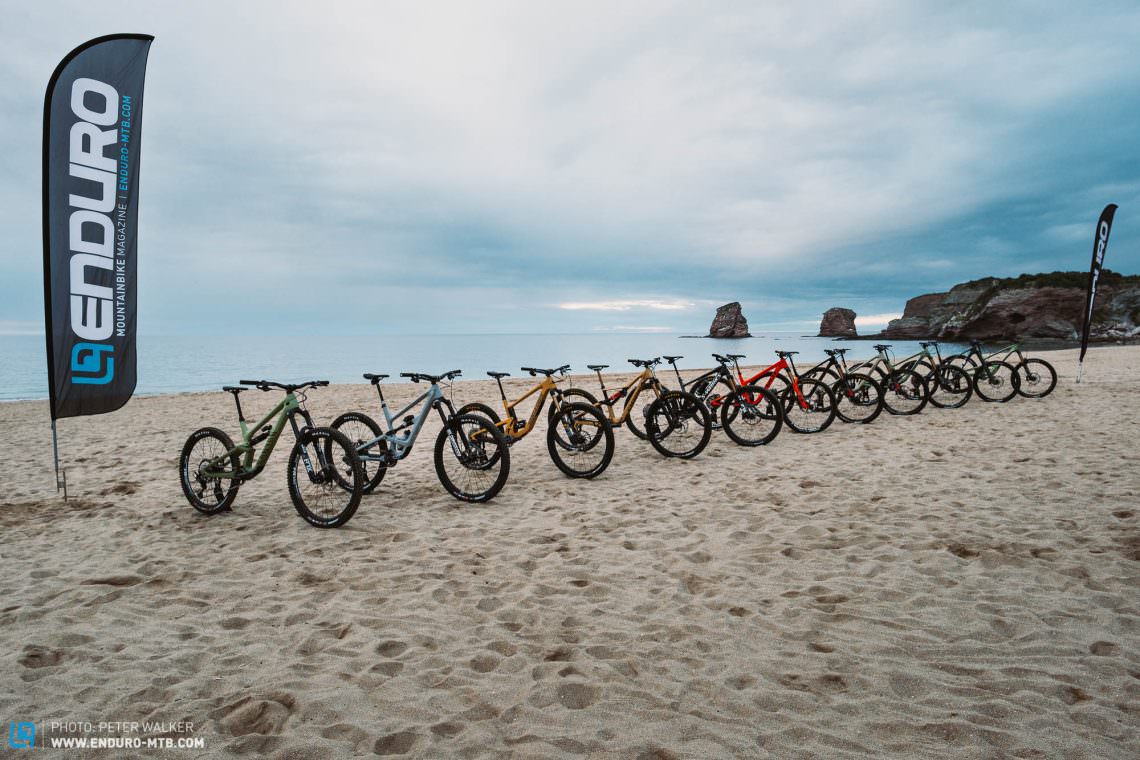
Did you enjoy this article? If so, we would be stoked if you decide to support us with a monthly contribution. By becoming a supporter of ENDURO, you will help secure a sustainable future for high-quality mountain bike journalism. Click here to learn more.
Words: Peter Walker Photos: Peter Walker




